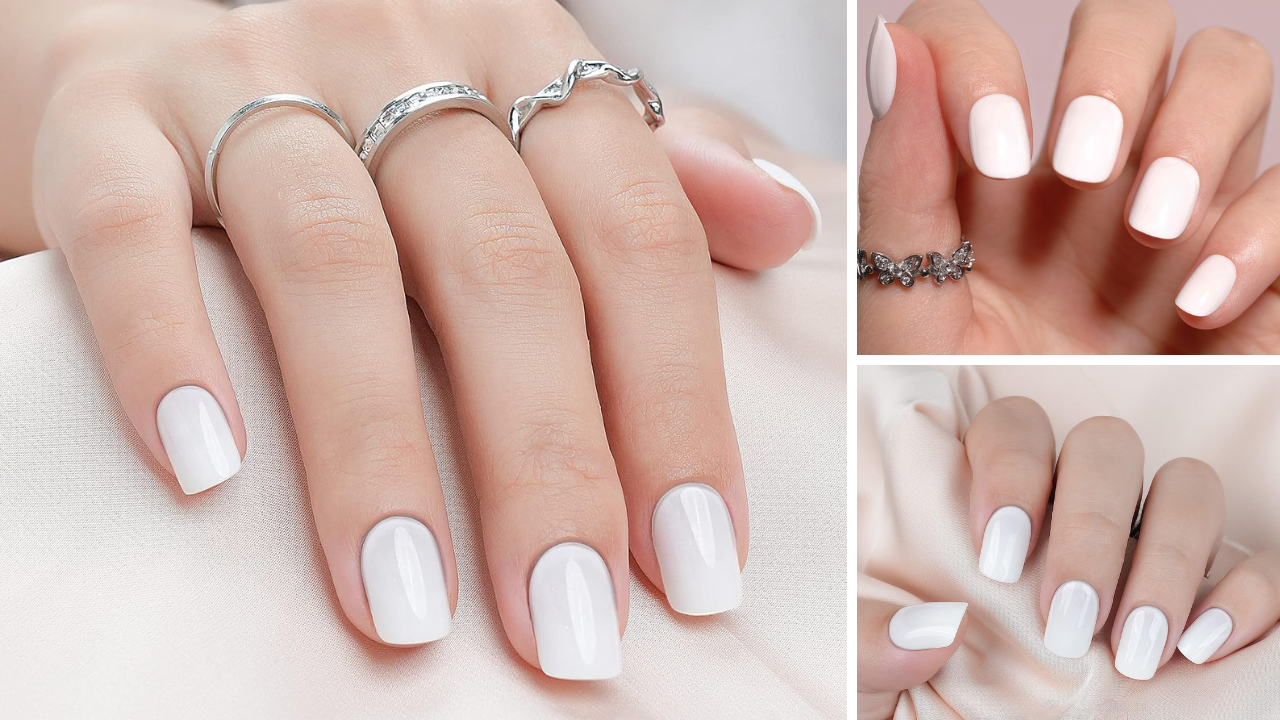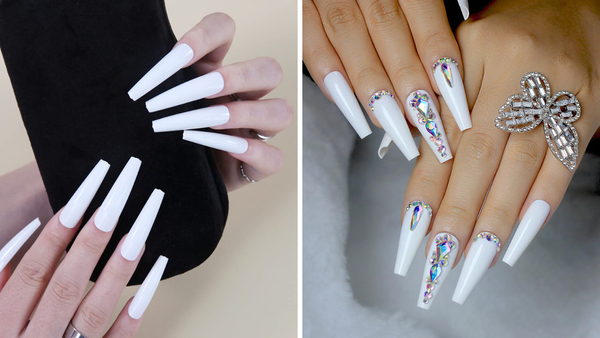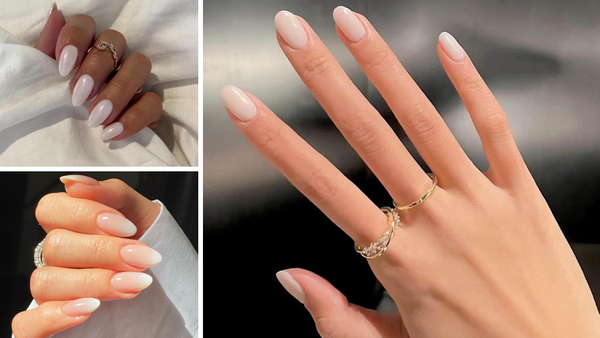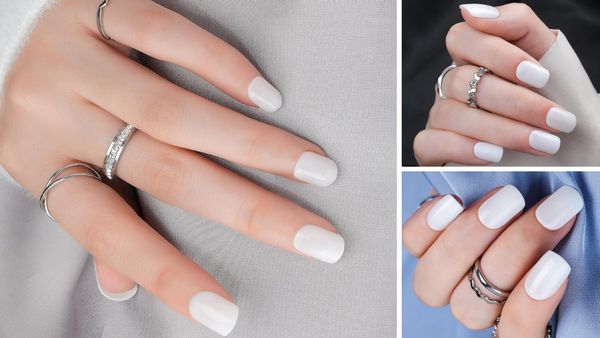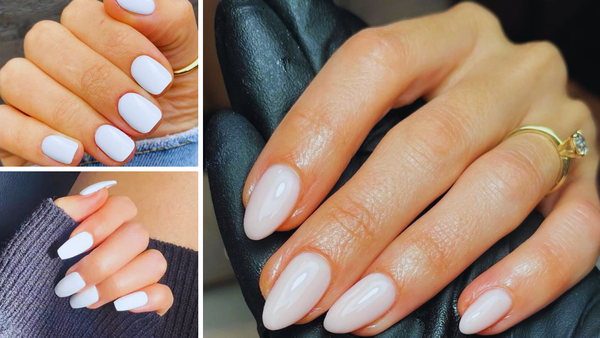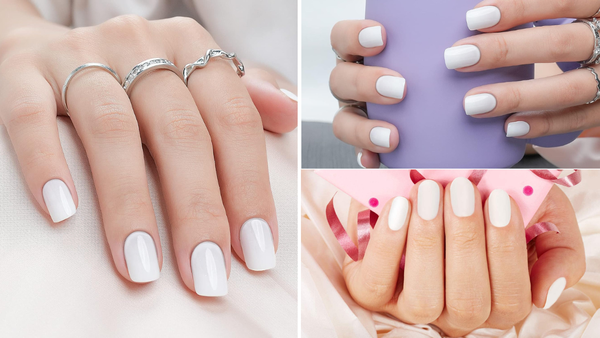Key Takeaways:
- White fake nails, including gel and acrylic types, can be safe for natural nails if applied and removed correctly.
- Regular maintenance and proper nail care are crucial to prevent damage to natural nails.
- Users of fake nails must be aware of potential risks, such as fungal infections and allergic reactions.
The Allure of White Fake Nails
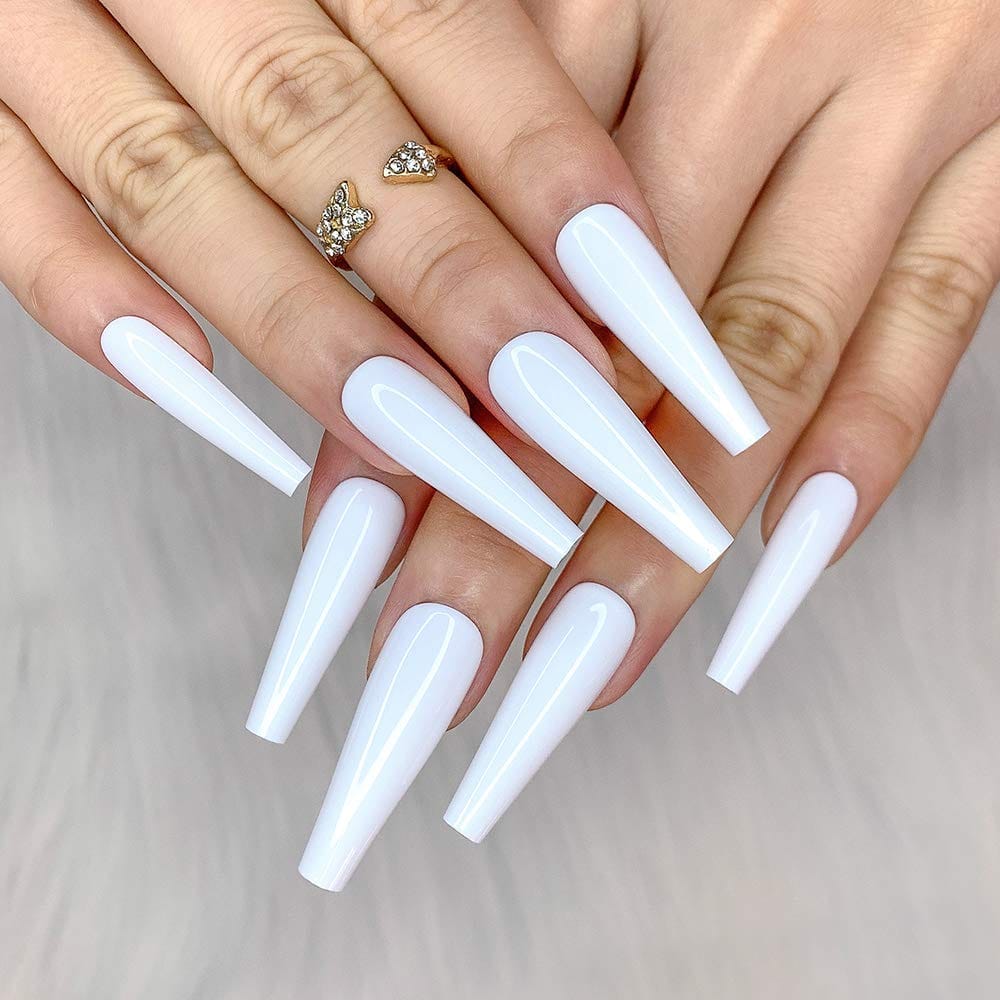
White fake nails, whether gel or acrylic, have become a staple in fashion trends. They offer a pristine and versatile look that complements any outfit. But the question remains: Are these stylish enhancements safe for your natural nails? The answer isn't black and white—while they can be safe, their safety largely depends on the application process, the quality of materials used, and how they are maintained.
Understanding Different Types of Fake Nails
Fake nails come in various forms, primarily gel and acrylic. Gel nails are popular for their durability and glossy finish, applied using a gel polish that cures under UV light. Acrylic nails, on the other hand, are created by mixing a monomer liquid with a powder to form a hard protective layer over the natural nail. Both types, if not applied or removed properly, can lead to issues such as weakened nail beds or fungal infections.
Application Process: A Critical Factor
The application process is pivotal in determining the safety of white fake nails on your natural nails. For gel nails, the process involves multiple layers of gel polish cured under UV lamps. UV exposure must be controlled to prevent skin damage. Acrylic nails require a mixture of nail liquid monomer and powder, which must be carefully applied to avoid direct contact with the skin and cuticles, reducing the risk of allergic reactions.
The Role of Nail Salons

Visiting a reputable nail salon is vital. Experienced technicians ensure that fake nails are applied correctly, minimizing the risk of damaging your natural nails. They also advise on the best type of fake nails suited to your nail health and lifestyle, whether gel manicures or acrylics.
Maintenance: Keeping Your Nails Healthy
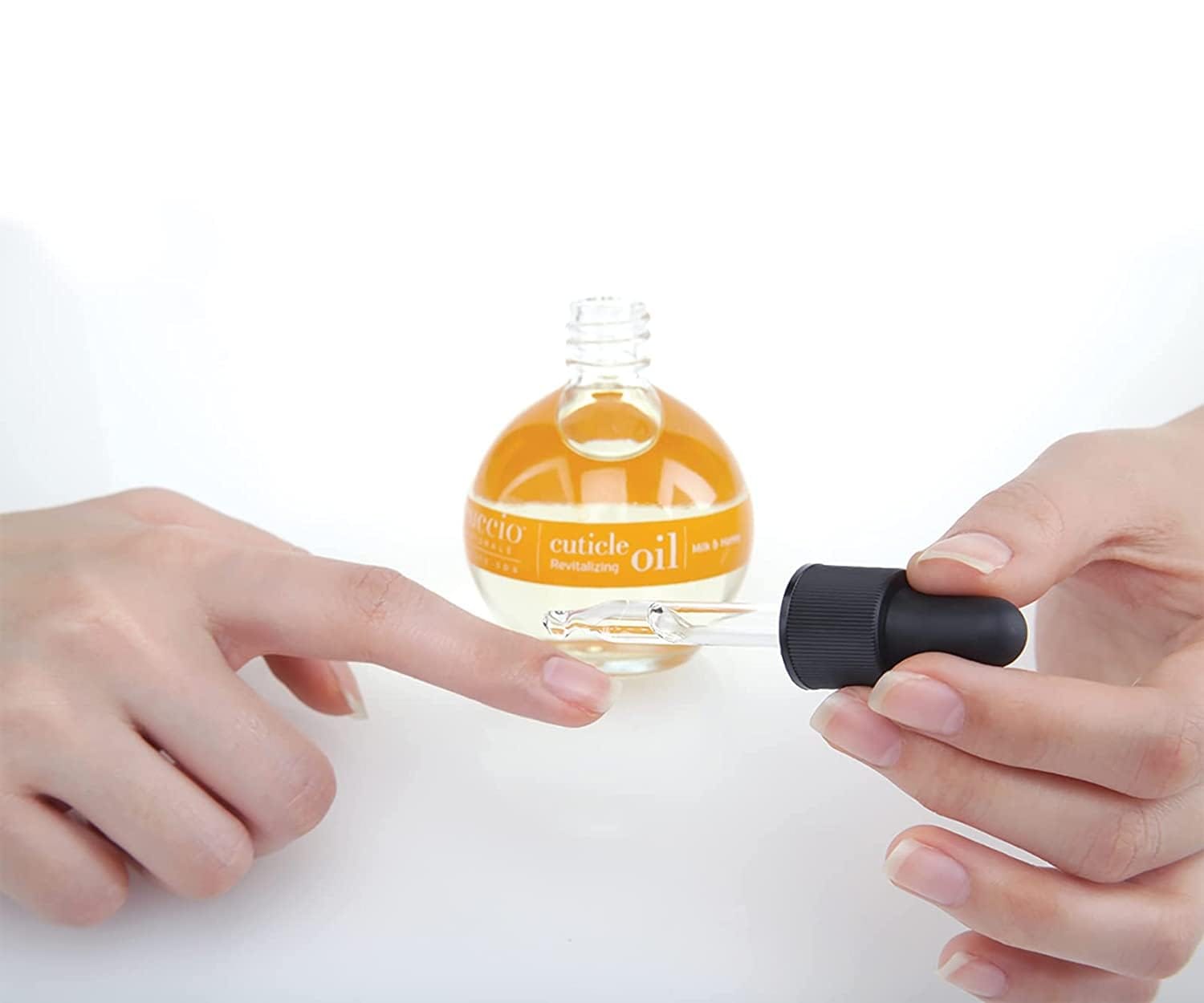
Maintaining fake nails is just as important as their correct application. Regular filling of gaps, using cuticle oil, and keeping the nail beds moisturized with products like olive oil can help maintain the health of your natural nails. Additionally, ensuring that the nails are not overly long can prevent them from catching and breaking, which can cause serious damage to the nail plate.
Long-Term Effects of Wearing White Fake Nails
When pondering whether white fake nails are safe for your natural nails, it's crucial to consider the long-term impacts. Regular use of artificial nails, including gel and acrylic types, can weaken natural nails. Over time, the constant pressure and lack of oxygen can make your natural nail beds brittle and more susceptible to breakage. Additionally, the adhesives and techniques used to secure these enhancements can cause thinning of the nail plate, which might take weeks or even months to recover fully.
Moreover, the risk of fungal infections increases with prolonged wear of fake nails. Gaps between the fake nail and the natural nail can become breeding grounds for bacteria and fungi, especially if moisture gets trapped. To mitigate these risks, it's essential to allow your nails to "breathe" by taking breaks between applications and using nourishing treatments like cuticle oil or olive oil to maintain the health of your nail beds. Regular inspections by professional nail salons can also help catch and address any signs of damage or infection early.
The Impact of UV Light on Nail Health
When considering whether white fake nails are safe for your natural nails, it's crucial to discuss the role of UV light in the application process. Gel manicures, which often accompany the application of white fake nails, require curing under UV lamps. This exposure can be a double-edged sword. On the one hand, it ensures your stunning white nails are set to perfection; on the other, frequent exposure to UV light can weaken the nail beds, making them more susceptible to damage. It's like basking in the sun—enjoyable but potentially harmful without the right precautions.
Moreover, the cumulative effect of UV light can extend beyond just the nails themselves, potentially increasing the risk of skin aging and even skin cancer around the fingernails. To mitigate these risks, wearing protective gloves with the fingertips cut off or applying broad-spectrum sunscreen to the hands can be effective shields. As you wouldn't sit in the sun without sunscreen, protecting your hands during gel curing is a wise move to keep your nails and skin healthy.
The Psychological Impact of Nail Aesthetics
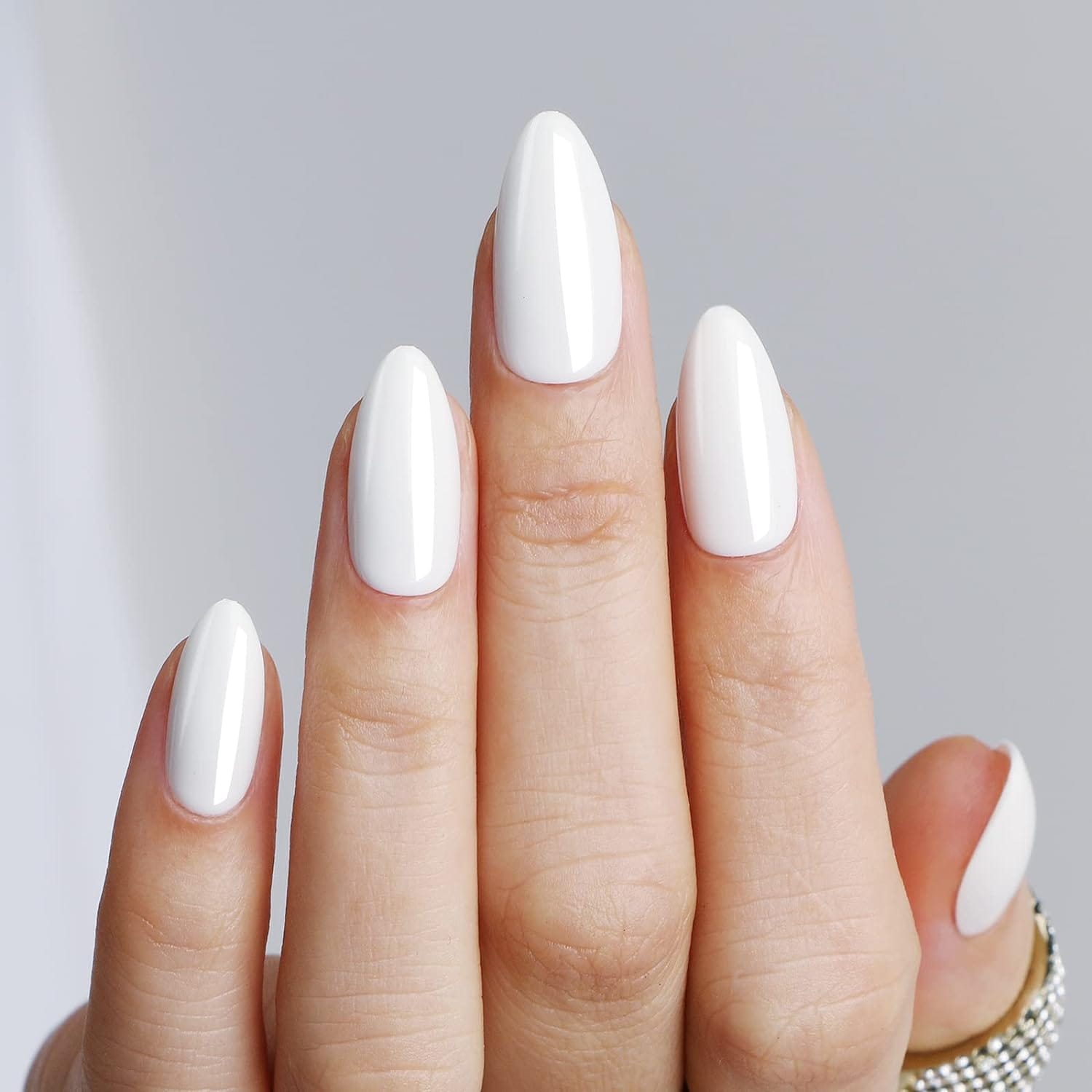
Have you ever considered how sporting pristine white fake nails could boost your mood? It's not just about looking good; it's about feeling good too. When people choose white fake nails, they're often aiming for a look that's clean, crisp, and powerfully simple. This choice can lift one's spirits and confidence, making them feel more put-together and in control. It's a small accessory with the power to make a big statement about personal style and self-assurance.
Moreover, visiting nail salons and choosing a nail style can be a therapeutic ritual for many. It's a moment of pampering that calms the mind and offers a break from the daily grind. For individuals who frequently bite their nails or have hands, they feel self-conscious about, professionally styled white fake nails can provide a cover that reduces stress and the habit of nail-biting. This not only helps maintain the integrity of natural nails but also enhances mental well-being by reducing anxiety associated with the appearance of one's hands.
The Dangers of Overuse: When Too Much is Truly Too Much

Are white fake nails safe for your natural nails? While they can be worn safely with the right precautions, overuse can lead to several issues. Frequent application of artificial nails, especially acrylics and gels, can make natural nails thin, weak, and brittle. The nail plate needs time to breathe and recover between applications. Over time, the constant pressure and lack of oxygen can cause the nails to weaken, which makes them more susceptible to breakage and fungal infections.
Moreover, the removal process of fake nails often involves acetone or other harsh chemicals, which can further damage the natural nail bed. If not done carefully, the process can strip away layers of the natural nail, leaving it vulnerable and damaged. Regularly giving your nails a break from enhancements and treating them with nourishing oils like olive oil can help mitigate these effects. It's crucial to listen to your nails' needs and give them time to recover to maintain their health and strength.
Bridging the Gap: The Role of Nail Hydration and Nutrition
Maintaining hydrated and well-nourished nails is essential, whether sporting white fake nails or embracing your natural nails. The health of your nails depends significantly on how well you take care of the nail bed and cuticles. Using cuticle oil regularly can play a pivotal role in keeping the nails and surrounding skin soft and hydrated, which in turn supports the overall health of your nails. Products enriched with vitamins and minerals can also help strengthen the nail plate and prevent brittleness.
In addition to topical treatments, internal nutrition shouldn't be overlooked. A diet rich in vitamins such as biotin and minerals like zinc can enhance the strength and health of your nails. Drinking plenty of water is also crucial, as it helps keep the nail beds hydrated and less prone to splitting. Remember, healthy nails are not just about external applications and treatments; they're also about what goes inside your body.
The Environmental Footprint of Nail Fashion
In today's eco-conscious society, the environmental impact of our beauty choices is increasingly under the spotlight. White fake nails, whether gel or acrylic, involve chemicals and processes that raise concerns. The production of nail glue, acrylics, and gel polish involves chemicals that can be harsh on the environment. Furthermore, the removal process of these nails often requires acetone, a solvent that contributes to air pollution and can be toxic if mishandled.
However, the industry is responding with greener alternatives. Brands are developing biodegradable press-ons and nail polishes free from harmful chemicals, offering beauty without guilt. Salons are also adopting practices that minimize waste and reduce the use of non-recyclable materials. For environmentally conscious consumers, these advancements provide a pathway to enjoy the beauty of white fake nails without compromising their values. This shift not only helps protect our planet but also caters to the growing demand for sustainable beauty solutions.
Exploring the World of Nail Enhancements: Static Nails as an Alternative
In the vast ocean of nail enhancements, static nails emerge as a beacon for those seeking a less damaging option to traditional acrylics or gel manicures. Static nails, or press-on nails, offer a universe of styles and colors, including the ever-popular white, without the harsh chemicals involved in acrylic or gel application. They're like a quick costume change for your nails—dramatic transformation without long-term commitment or damage.
The beauty of static nails lies in their simplicity and safety. Application involves non-damaging nail glue or adhesive tabs that don't compromise the integrity of the natural nail. This method eliminates the need for UV light, reducing the risk of weakened nails and skin issues. Plus, when it's time for a style update, removal is straightforward and gentle. A few minutes with some oil or warm water, and you can bid your temporary companions farewell, leaving your natural nails as healthy as when you first met.
Innovations in Nail Enhancement Safety
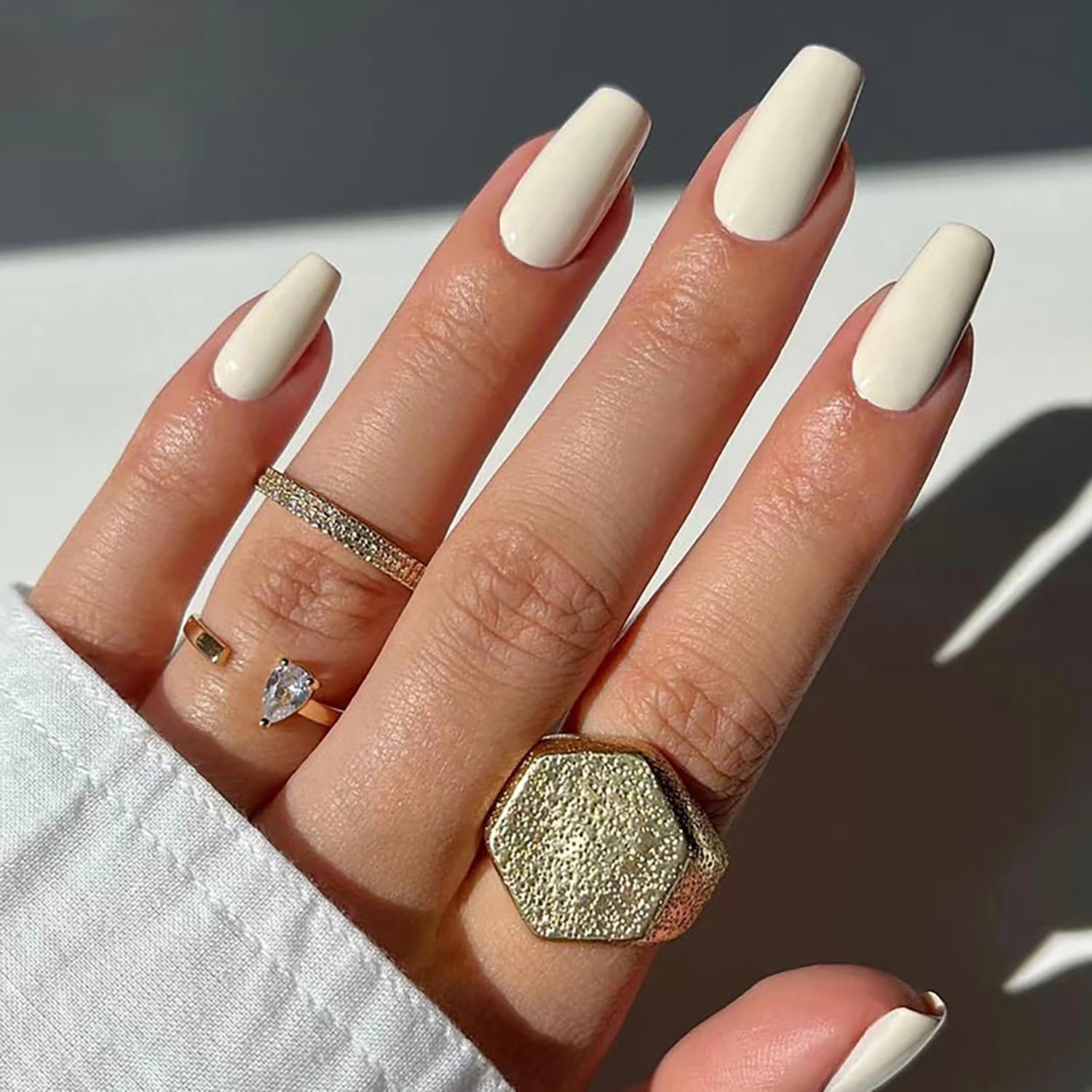
The nail industry is continuously evolving, with advancements to reduce the risks associated with fake nails. Modern products like Dashing Diva's press-on nails and static nails offer a safer alternative to traditional acrylics and gels. These innovations are designed for easy application and removal, which can be done at home in a few seconds without harsh chemicals like acetone. This reduces the potential for damage to the natural nails and cuticles, making them a popular choice for those who prioritize nail health.
Additionally, new formulations of nail glues and gel polishes are being developed to minimize allergic reactions and reduce the severity of nail damage. These products use gentler ingredients and provide more flexible wear, which helps maintain the integrity of the natural nail underneath. By choosing these advanced options and following a proper application and removal process, wearers can enjoy the aesthetic benefits of fake nails without compromising the health of their real nails.
Risks Associated with Fake Nails
Despite their beauty, fake nails can pose risks. If moisture gets trapped between the fake nail and the natural nail, it can become a breeding ground for fungal infections. Moreover, the chemicals used in acrylic nails can cause allergic reactions in severe cases, leading to symptoms like itching, redness, and swelling around the nails.
Safe Removal Practices
Safe removal is as crucial as safe application. Whether it's gel nails or acrylics, the removal process involves soaking the nails in acetone and gently removing the material using a nail file. This process should be done meticulously to avoid stripping layers off the natural nails, which can leave them thin and weak.
Alternatives to Traditional Fake Nails

For those concerned about the safety of traditional fake nails, options like press-on nails might be a safer alternative. Press-ons can be applied at home and typically involve less harsh chemicals. However, ensuring they are applied and removed properly is key to preventing damage.
Nail Care Tips for Fake Nail Users
Regular nail care is essential to keeping your natural nails healthy under those stylish white fake nails. This includes using nail hardeners, avoiding nail-biting, and giving your nails a break between fake nail applications to let them "breathe" and recover.
The Future of Nail Enhancements
As nail technology advances, newer and safer methods of nail enhancements are being developed. These innovations aim to reduce the risk of damage and promote the health of natural nails, ensuring that beauty enthusiasts can enjoy the best of both worlds.
Summary
White fake nails can be a safe option for your natural nails if proper precautions are taken during the application, maintenance, and removal. Choosing the right type of fake nails, visiting reputable nail salons, and adhering to good nail care practices are key to keeping your natural nails healthy. While there are risks associated with any artificial enhancements, being informed and cautious can help mitigate these risks.
FAQ Section
Can wearing white fake nails lead to fungal infections?
Yes, if moisture gets trapped between the fake nail and the natural nail, it can create an environment conducive to fungal growth. Proper application and regular maintenance can help prevent this.
Are there any safer alternatives to traditional gel or acrylic nails?
Yes, press-on nails are considered a safer alternative as they generally involve fewer harsh chemicals and can be applied and removed more gently.
How often should I give my natural nails a break from fake nails?
It's recommended to give your natural nails a break every few weeks to allow them to recover and maintain their strength. This interval can vary depending on the individual's nail health and the type of fake nails used.
